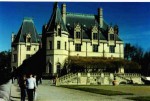 A visit to Biltmore Estate in Asheville, North Carolina, is a delightful experience and held quite a surprise in regard to the gardens. The literature and public opinion suggest that the spring bulb show and the fall coloration are spectacular but that there is nothing special the rest of the year. Not so! In mid summer, the gardens are lovely and offer far more than the “bedding out” that I expected. I had difficulty finding in depth information on the plantings but I was delighted and impressed with what I saw and would like to have more information. This garden is well worth a visit during the summer and I intend to try it during the Christmas season (see also A Fall Visit to Biltmore Estate, or a Mid-May Visit to the Biltmore Estate Gardens).
A visit to Biltmore Estate in Asheville, North Carolina, is a delightful experience and held quite a surprise in regard to the gardens. The literature and public opinion suggest that the spring bulb show and the fall coloration are spectacular but that there is nothing special the rest of the year. Not so! In mid summer, the gardens are lovely and offer far more than the “bedding out” that I expected. I had difficulty finding in depth information on the plantings but I was delighted and impressed with what I saw and would like to have more information. This garden is well worth a visit during the summer and I intend to try it during the Christmas season (see also A Fall Visit to Biltmore Estate, or a Mid-May Visit to the Biltmore Estate Gardens).
The entrance to the house and gardens prepares you for the visual banquet you are about to see. The road is long and narrow with countless meandering turns and brings you slowly through a wooded area, designed by Frederick Law Olmsted of New York’s Central Park fame, to the house or gardens, your choice.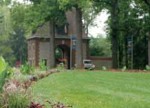
We began our visit with the conservatory designed by Richard Morris Hunt, also architect of the house.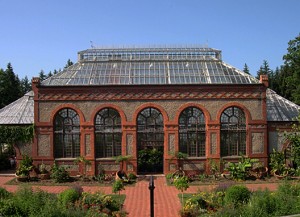
The conservatory provides exotic plants and flowers for the house and tender plants for the garden just as it did in Vanderbilt’s day.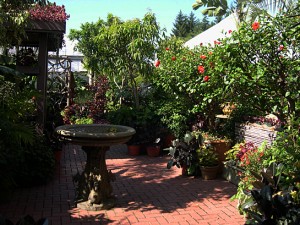
Outside the conservatory is a garden with many flowers attracting butterflies and hummingbirds.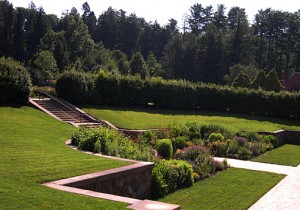
A long, elegant flight of stairs brings you to the rose garden featuring both heirloom roses as well as All American Roses.
A beautiful mass planting of lavender overhangs the rose garden, English style.
Bountiful borders of flowers fill the borders on three sides. Here the white border overflows its boundaries with its luxuriant growth.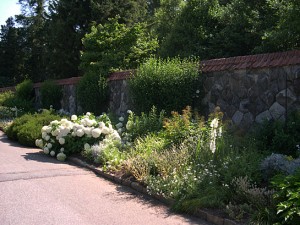
In the center is an arbor covered with grape vines and enhanced with massive patterned beds planted out with flowering annuals in the Victorian manner.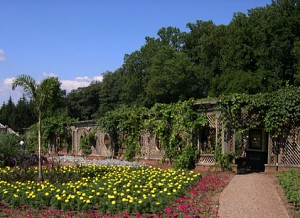
This huge 4 acre complex of gardens is enclosed by a wall with espaliered plants such as apple, pear, apricot, plum, rose of Sharon, pyracantha to delight the eye.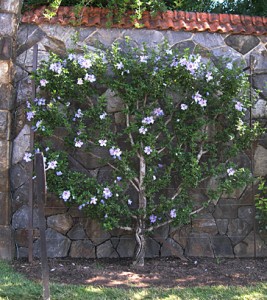
The design of this whole garden was inspired by the gardens of Chateau de Vaus-le-Vicomte, a 17th century chateau near Melun, France, belonging to Nicolas Fouquet, finance minister of Louis XIV. The story goes that Louis was so infuriated by the extravagances of Fouquest’s chateau at Vaus-le-Vicomte that he had him banished and built Versailles to out do him. Isn’t history interesting?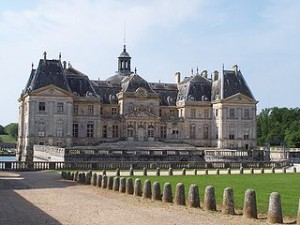
Beyond the walled garden is a shrub garden featuring 500 different species of plants, shrubs and trees in a naturalistic setting.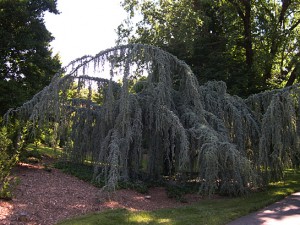
A further climb up the hillside towards the house brings you to the Library Terrace that offers a fabulous view of the Italian Garden. This garden was designed in the style of 16th century French gardens but derives its name from the many Italian style statues that decorate the garden. Five pools create the setting for the display of water plants.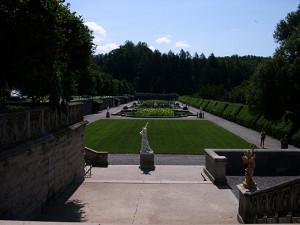
You will find a variety of water plants including water lilies…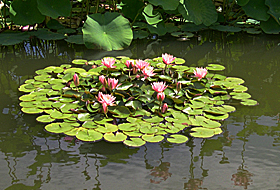
Lotus…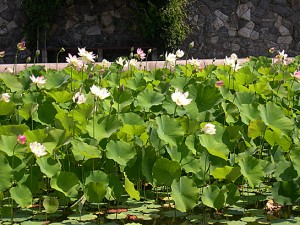
with koi swimming through out the pools enjoying their regal surroundings.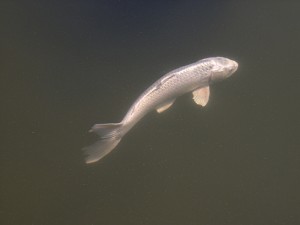
After a visit to the house, you can enjoy the farm area where there is a farmyard and gardens. These cucumbers are going to be trained up teepees.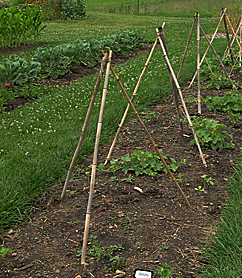
Pole beans are growing up strings set up as a support for them.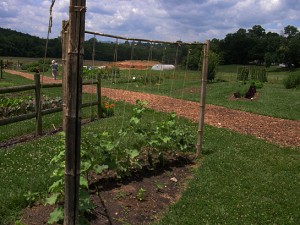
This whimsical scarecrow made of pots adds charm to the vegetable garden.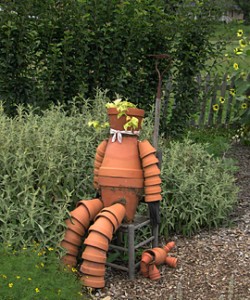
There are many other gardens at Biltmore but they are seasonal and not of interest during summer. They could be great at other times, so investigate! They should be spectacular when in season.
The inn at the estate is lovely although, of course, pricey. If you want an elegant get away, this is one to consider; it offers mountain views from the rooms, the cocktail balcony, the dinning room, the terrace, and more. The food and service in the inn are excellent.
Note Bene: Biltmore, unlike many other estates of the American gentry, is a profit making organization in the tourist trade, rather than a museum or research facility.

Thanks for this inviting tour of Biltmore. A garden I’ve yet to visit!
Cheers,
Alice
Alice
Biltmore and the area around it is very beautiful, especially in the Fall when the autumn coloration is at its height. Biltmore really needs to be visited in many seasons as there is something very different to see each time. We are hoping to go to see the Xmas decorations, and then the bulb display in the Spring. If you come to the Southeast, Biltmore is worth a visit. Karen
[…] has something new to see in every season (see also, A Summer Visit to Biltmore Gardens)so no matter when you go you can enjoy the house and gardens. This year we took our bikes and tried […]